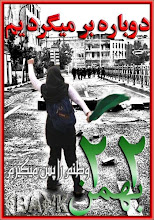I have reviewed Collect twice in its illustrious history – ok, once, (2008) and a brief comment at the end of another post, (2009). I then forgot about it until last year when a kind soul reserved complimentary tickets for me and I managed to be away the entire weekend. I have been inattentive, to say the least.
My first visit to Collect was also its first outing. It was
at the V&A and still had the feel of ‘tarted –up’ clutter. It was too
crowded – with stuff I mean - and the standard was inconsistent. After another
year at the V&A, it moved to the Saatchi gallery near Sloane Square. It was
a bold and, in spite of my acerbic comments in 2009, an inspired move. By all
accounts it has improved steadily since and, while I cannot comment on any of previous
shows, 2012 was a triumph.
The Saatchi gallery is a beautiful, elegantly proportioned
space, graced with high ceilings, magnificent wooden floors and plenty of
natural light. It is the perfect venue for the display of beautiful objects.
The exhibiting galleries all had plenty of room so the work displayed had room
to breathe and the audience had enough space to walk around it. In practice,
this means that the viewer moves much more slowly around the exhibition than is
the case in more crowded venues. It allows one time to think and reflect of the
work.
Collect is a serious selling show. That is its primary
purpose. It is also a showcase but makes no pretence to being either
representative or a survey show. The galleries select their highest quality
work and the organisers, by bringing in collectors and media, facilitate the
bringing of ‘museum quality’ craft to its potential buyers. In doing so, they
are starting solve one of the most persistent and seemingly intractable
problems of craft: how to bring the goods to market.
In the process, every aspect of craft exhibiting and
selling, from display to the attitude of the gallerists, has become palpably
more professional. Collect is also truly international now. It is probably the
only high-end, international applied arts fair in Europe. The Scandanavian
galleries and artists are particularly well represented and are also a breath
of fresh air. There is a strong focus on the ‘upcycled’ work, where ‘trash’ or
discarded ceramics, in particular, are remade, reinvented and become entirely
new works. In most cases this is the only chance Londoners have to see this kind
of work. Craft in London is otherwise parochial, poorly exhibited, (with one or
two notable exceptions,) and largely very conservative.
La Ceramica Gallery was a welcome new addition, bringing the
work of internationally acclaimed Nicaraguan potters to London for the first
time, and Hanart TZ was the first Chinese gallery to show at Collect, bringing
ceramics and laquer work - the
latter is a particularly exciting development since, as far as I know, we have
not seen contemporary laquer work in this country before. If I were handing out
prizes, it would go to the Japanese gallery, Yufuku. All of the work on this
stand was breathtaking. Every piece shone with the sheer strength and
conviction of its own presence. Graceful, classical, poised - even when
entirely un-classical – it was all work you wanted to come back to again and
again, just to make sure you really had seen such a thing. The ceramic works of
Nakamura Takuo were unforgettable. The colour and patterning was reminiscent of
early 17th Century Japanese silks, glistening, strong colour but
subtle – mostly tertiary colours - and faultlessly composed with a painterly vision. How anyone
brings together soft ripe pinks, sombre but glowing maroons, lime-ish greens
edged in something darker, and bright ultramarine, is beyond me. I could gaze
on this work for the rest of my life and, as soon as I have any money at all,
I’m going to make sure I can.





















































